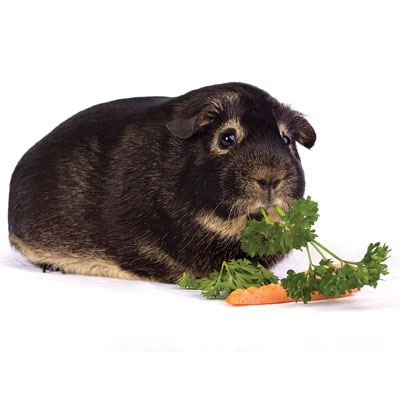
Black Otter sow
Photograph: Lisa Kavaney
It should be remembered that, like human beings, cavies cannot manufacture vitamin C so a daily supply of green food or roots needs to be made available. The options are numerous with grass a No. 1 favourite in summer time along with a good mixture of more...
Hutches need to offer comfortable housing that is large enough, dry and draught free. An indoor hutch 24” (60cm) x 18” (45cm) will accommodate a single cavy and, as a minimum requirement, could also house a breeding pair or a sow and litter. The hutch could be made bigger by more...
There are several options. The hutch floor can be lined with newspaper with a covering of wood shavings, hemp based litter or chopped straw with hay or barley straw as a top covering. If you are a gardener, more...
Provided they are well fed and suitably housed, cavies are normally blest with good health. Various ailments will, of course, be encountered from time to time in any stud, however good the management. Fanciers themselves can clear up most minor problems although there are times when a vet may need to be consulted. more...
Stock should be at least six months old before contemplating breeding and it is normally accepted that sows should have their first litter before they become twelve months old. The usual procedure is to run the boar and sow together until the sow shows visible signs of pregnancy. Then, remove more...

Black Otter sow
Photograph: Lisa Kavaney
Wash 3: Designed by Simon Neesam for the British Cavy Council © 2009